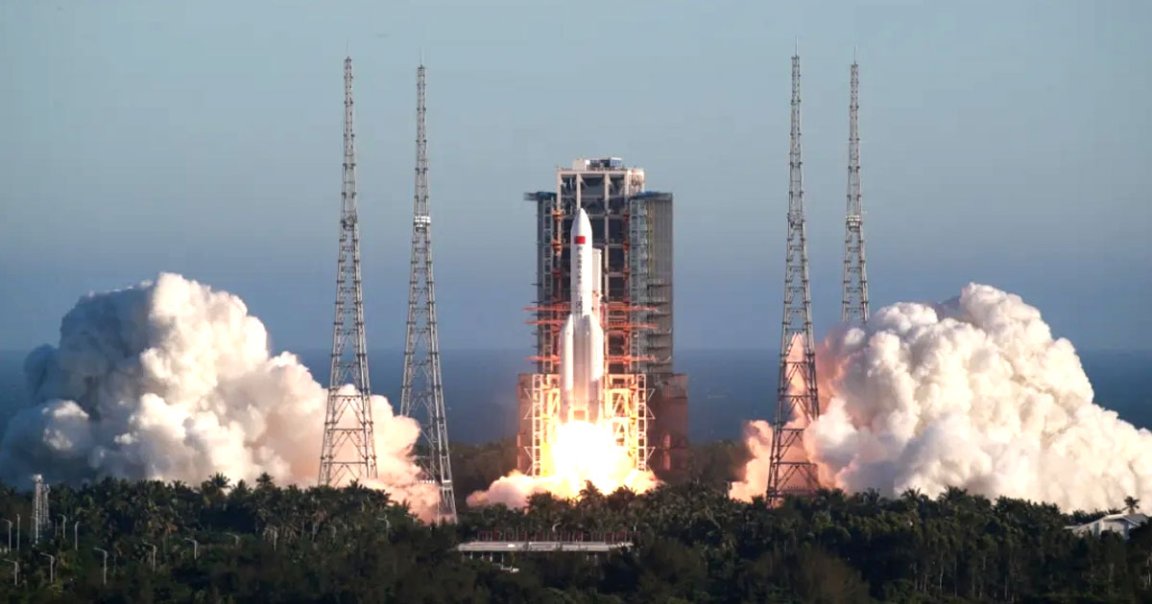
After about a week in Earth’s orbit, the core stage of China’s gigantic Long March 5B rocket is now plummeting towards our planet’s surface.
“It is the most massive object to make an uncontrolled reentry since the 39-tonne Salyut-7 [spacecraft] in 1991,” Jonathan McDowell, astronomer at the Harvard-Smithsonian Center for Astrophysics, wrote in a tweet last week. Today, he added that the space debris is now “low enough now that reentry heating may make it visible” from the ground.
Luckily, the experimental spacecraft itself — in contrast to its core stage — made it back down intact after spending three days in orbit.
US officials are tracking the object now and trying to pinpoint the exact moment when it makes touchdown.
Rockets usually tend to break up into smaller pieces as they fall. Some can carry themselves to safer reentry locations such as the Pacific Ocean, according to Forbes, but that doesn’t seem to apply to China’s Long March rocket.
Most pieces of debris will likely burn up in Earth’s atmosphere and not make it onto the ground.
A previous instance of a massive object making its way back to Earth was China’s Tiangong-1 space station. Its orbit slowly decayed before breaking up and splashing down in the South Pacific Ocean in April 2018.
Despite the station’s debris potentially covering an area of thousands of kilometers, the chances of being hit by a piece of debris was “actually 10 million times smaller than the yearly chance of being hit by lightning,” according to the European Space Agency.
Update: The rocket eventually splashed down — and reportedly dropped pieces over parts of Africa.
READ MORE: A Chinese Rocket Is Out Of Control And Falling Towards Earth Right Now [Forbes]
More on the launch: CHINA LANDS MOON-BOUND SPACESHIP AFTER 3-DAY ORBITAL JOYRIDE